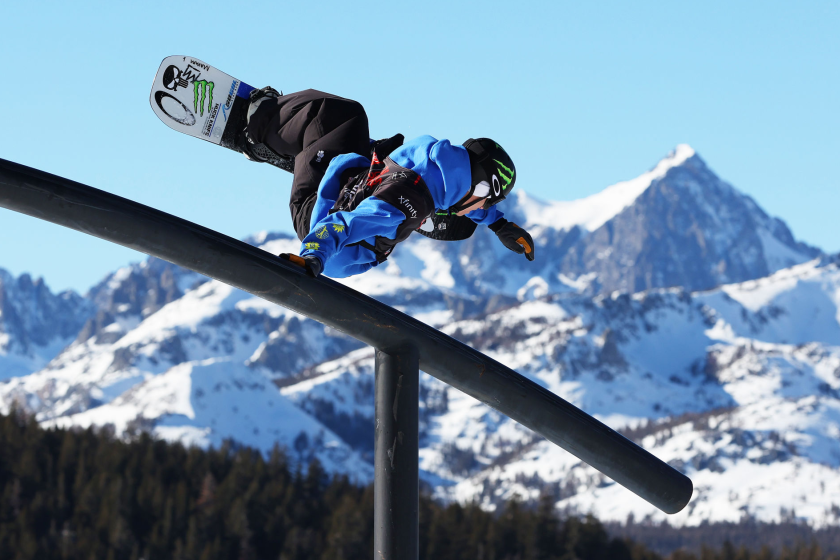The real Olympic challenge: Traveling with sleds, bulky gear and 20 pairs of skis
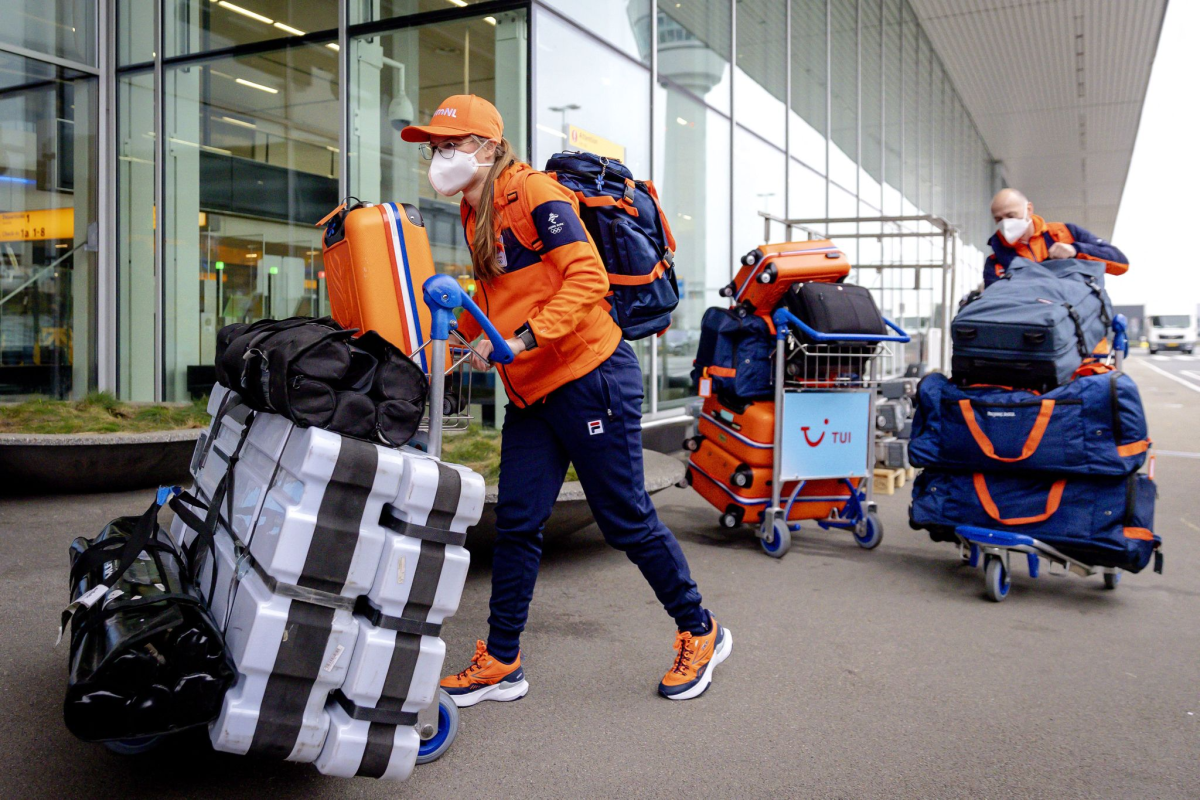
- Share via
There are two types of Olympic athlete.
In the warm days of summer, gymnasts compete in skimpy outfits and bare feet. Sprinters wear skin-tight tops and shorts, often minus the socks. Divers require a Speedo, maybe one of those little towels to wipe off, nothing more.
At the frosty Winter Games, a snowboarder in a bulky jacket, pants and boots could stuff all three of those uniforms into his pockets.
Cold-weather sports require gloves and goggles and helmets, duffel bags bulging with hockey sticks, rifles for biathletes and four-man bobsleds the size of grand pianos. Downhill racers bring multiple pairs of skis for every conceivable type of snow and weather.
“Yeah, the Winter Games are equipment-heavy,” said Sara Studebaker-Hall, a former Olympian who, as operations director for USA Biathlon, helps current athletes with travel. “It’s plenty of luggage.”
Mammoth’s culture and environment has produced many of the top U.S. snowboarders, and some of them will be competing for gold at the Beijing Olympics.
The American team that departed Los Angeles International Airport on Thursday, headed for the Beijing Games that begin on Feb. 4, was a study in careful packing.
“You can tell the veteran by how much stuff they bring,” said David Wise, a two-time gold medalist in freestyle skiing. “The person who shows up to the airport, going on an overseas trip with five bags, you can tell is a rookie.”
At about one-third the size of their summer counterpart, the Winter Olympics comprise fewer events, fewer countries and smaller teams, so the total amount of gear is less. But, on a per-capita basis, there is no comparison — that snowboarder’s pockets could probably accommodate a wrestler’s singlet too.
The U.S. Olympic & Paralympic Committee sent 160 pallets of equipment to China ahead of time, hiring a shipping company known for handling rock ’n’ roll tours for the likes of Led Zeppelin, Bruce Springsteen and Queen. Still, officials did the math before takeoff.
“We have to be conscious of the number of people who are going to fly while also accounting for the weight of baggage,” USOPC spokesman Jon Mason said. “It was definitely an equation that went into play.”
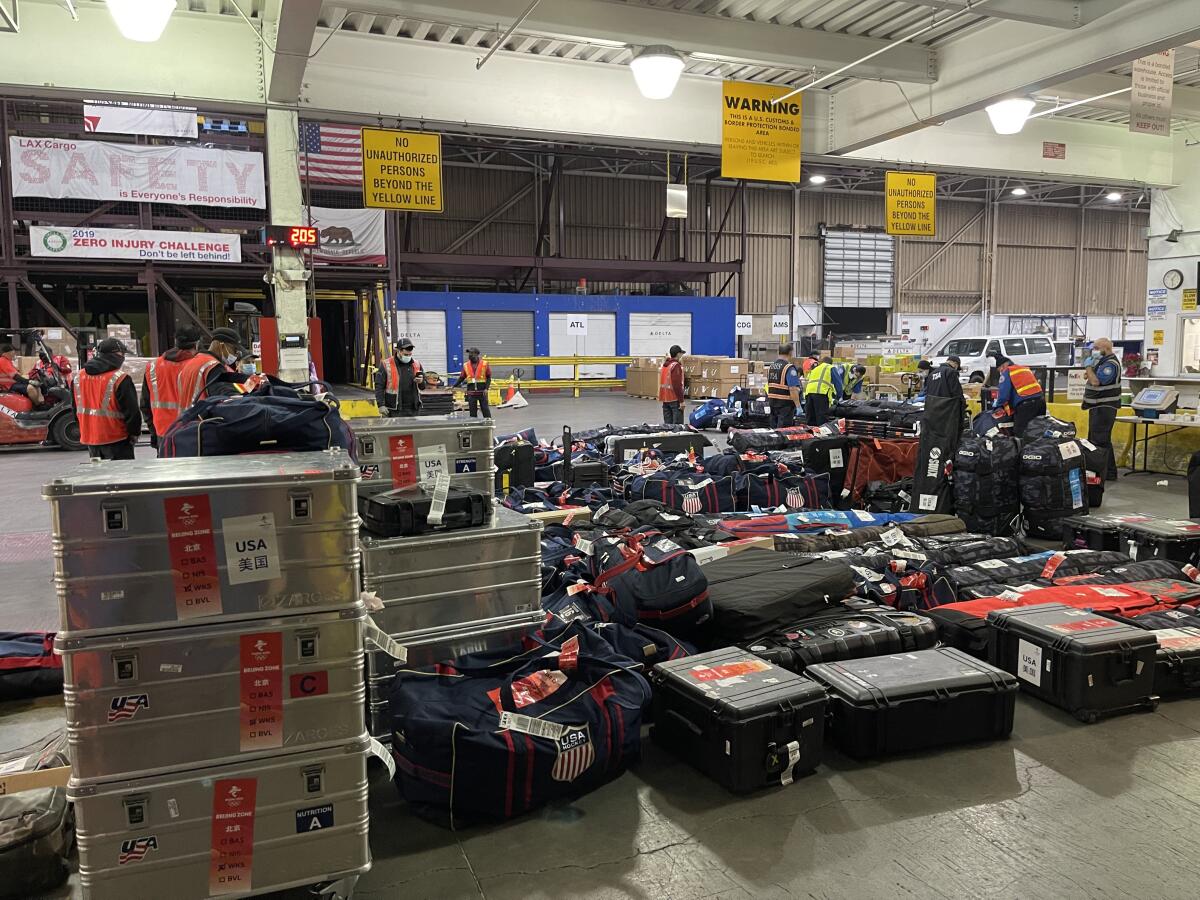
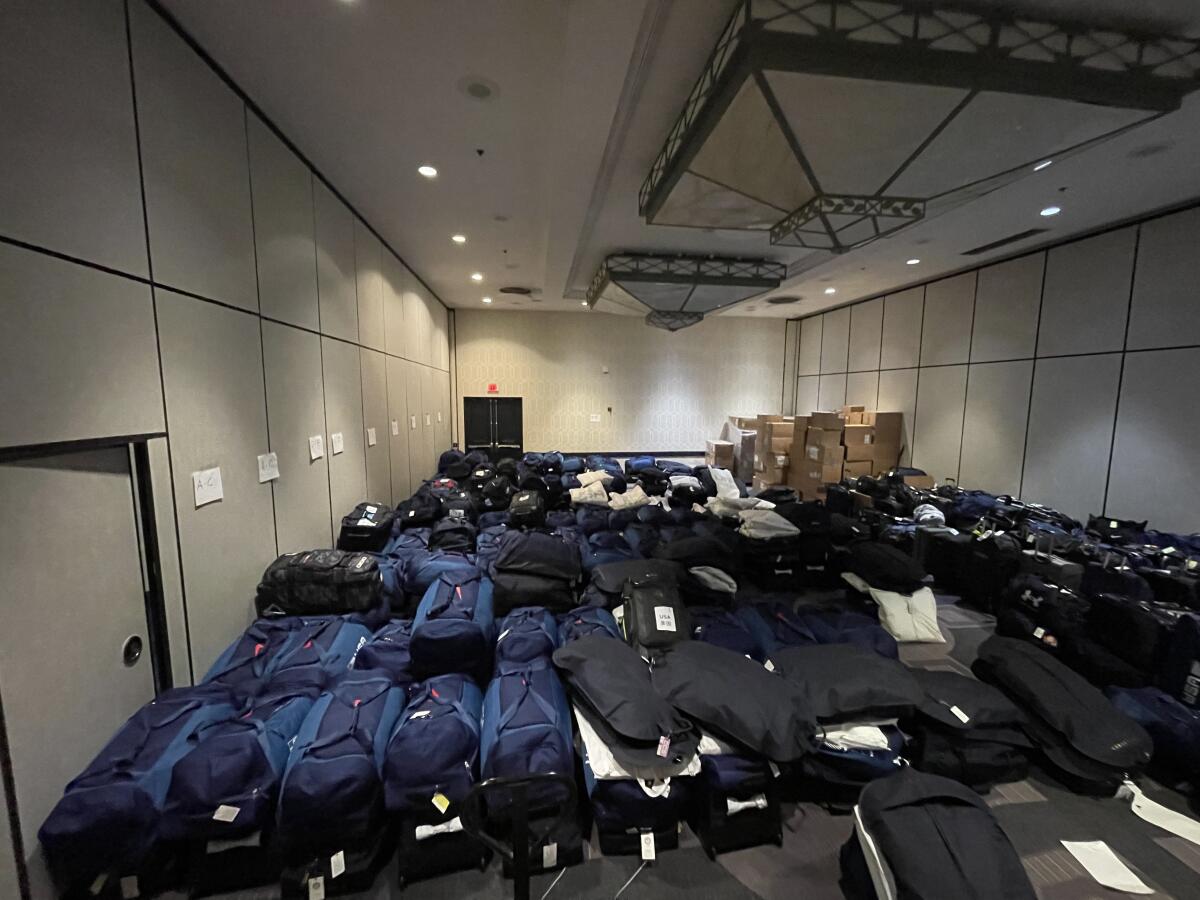
With 224 athletes on the roster — the second-largest American contingent ever — the packing list was more extensive than a few table-tennis paddles or extra basketball high-tops.
Hockey players bring 10 or so sticks and skiers like to have 10 to 20 pairs of skis, all tuned a bit differently, for each of their events. American star Mikaela Shiffrin, who hopes to enter several disciplines, including the blurry fast Super-G and technical slalom, could have as many as 60 pairs on hand.
Shiffrin and her teammates lug some gear themselves, with technicians and manufacturers delivering the rest. Wise brings extras because his freestyle skis take a pounding when he launches himself into the air, spinning, then coming down hard.
Nicknamed “the Ski Test Dummy” by his manufacturer, he says: “I have a tendency to break more equipment than anyone else.”
Skeleton racers have it worse — they are the ones who often must slog through airports, pulling an 80-pound case.
“We have our sled and also the runners and spikes and helmets and all the gear we need to prep the sled,” said Katie Uhlaender, a five-time Winter Olympian. “I think I checked, like, six bags.”
The small stuff can be difficult, too. For biathlon, which combines cross-country skiing and shooting, competitors and team officials must know the laws for transporting ammunition into each new country and the requirements for getting their rifles through customs.
Any extra space in their gun cases is filled with underwear and socks, which provide extra padding while also saving on luggage. It’s a trick skiers do with their ski bags, just like suburban families packing for a vacation in the mountains.
Though everyone on the U.S. roster has competed on the international circuit, the Olympics are tricky. When athletes arrived in Los Angeles a few days before their charter flight, they received armfuls of clothing from sponsors Nike and Ralph Lauren.
“All of my bags are breaking at the seams,” women’s hockey star Amanda Kessel said. “And I have two carry-ons filled to the brim.”
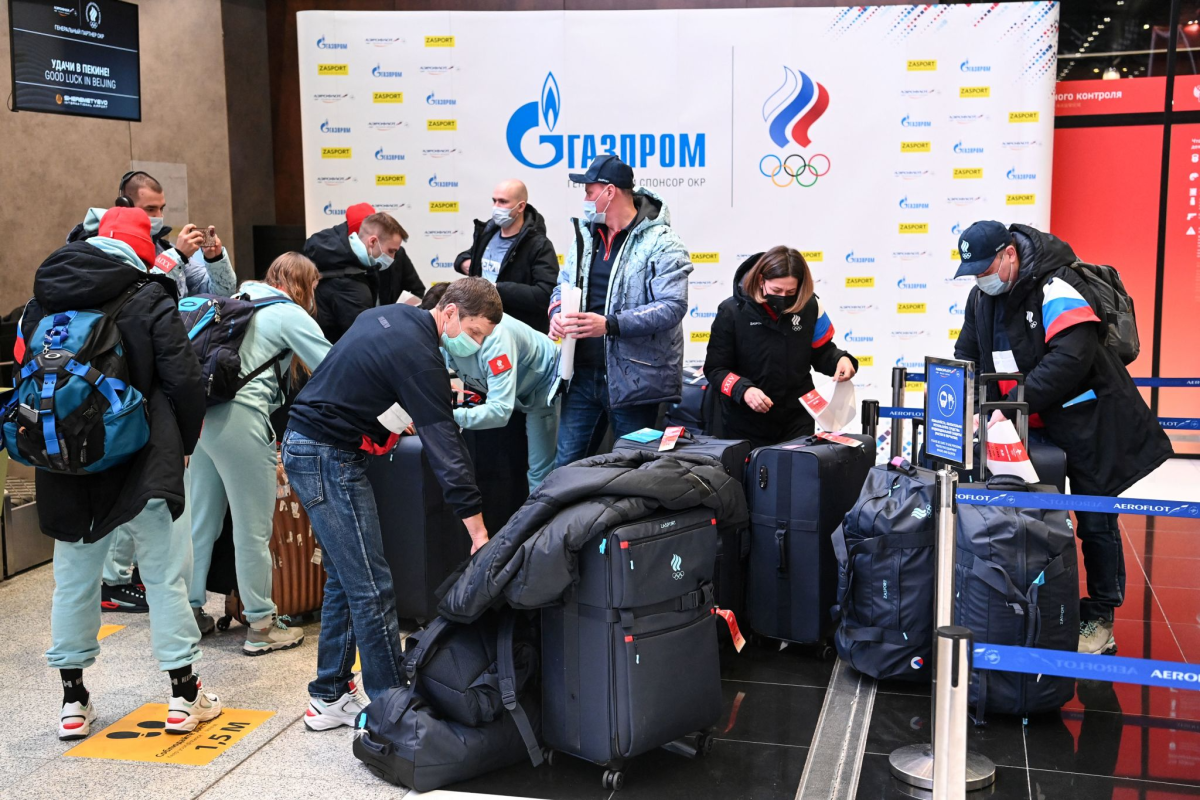
Luge racer Chris Mazdzer had already given up traveling with a pillow because it was too bulky. Three-time medalist snowboarder Jamie Anderson had pared down to a medium-sized suitcase filled with “goodies” and vitamins.
Brita Sigourney, a bronze medalist in freestyle skiing, takes a duffel bag with mostly sweatpants and lounge clothes because she is “usually exhausted and not doing much besides relaxing when we’re not skiing.”
At least winter athletes don’t have to sweat the truly big stuff.
Olympic officials supply the stones for curling, at about 40 pounds each, and the U.S. governing body for bobsled ships its sleds — with enough weights for a mobile gym — in crates. Racers may add personal belongings to the crates, with some exceptions.
There have been occasions when someone has left a wristwatch in a crate, delaying the entire shipment because even the tiniest batteries are prohibited. The sleds, which left from Europe in mid-January, passed Chinese customs on Tuesday.
“This time period is a little antsy,” U.S. bobsled official Morgan Tracey said. “You’re hoping you did all the paperwork right.”
Donovan Carrillo, who is the best ice skater in Mexican history and trains at a shopping mall rink, is headed to Beijing. It’s taken lots of perseverance.
That is why Uhlaender doesn’t mind lugging her sled, which she has named “Gilbert.” Speedskater Brittany Bowe boarded Thursday’s flight with her favorite skates in tow.
“We’re not allowed to bring the blades on the plane,” she said. “But the boots never leave my backpack.”
Packing hassles did not end when the U.S. team landed in Beijing. In a few weeks, as competition winds down, athletes will have to shove all that stuff back into suitcases, bags and carry-ons. Some will fly home, others will return to the international circuit.
But luge racer and two-time Olympian Emily Sweeney did not sound worried.
“As long as I have, honestly, underwear and a credit card, I’m good to go.”
More to Read
Go beyond the scoreboard
Get the latest on L.A.'s teams in the daily Sports Report newsletter.
You may occasionally receive promotional content from the Los Angeles Times.

